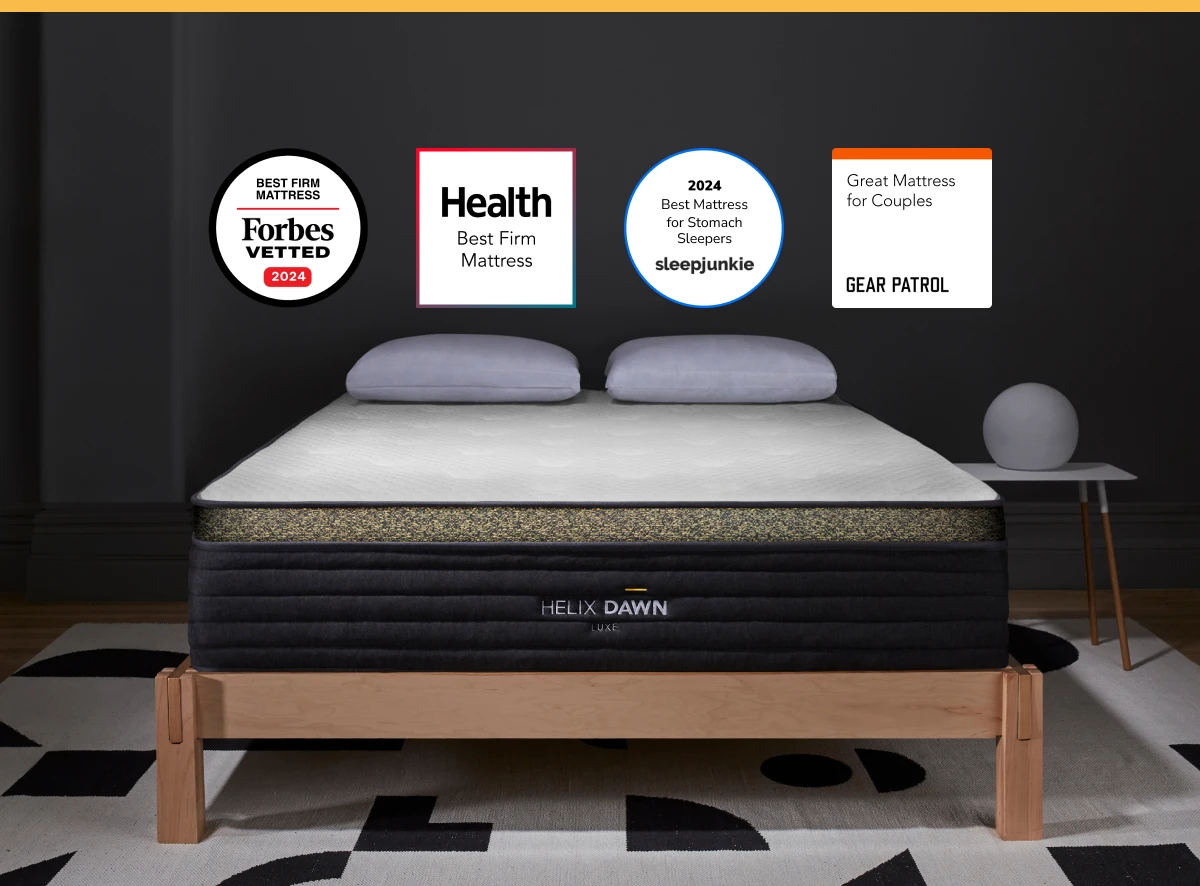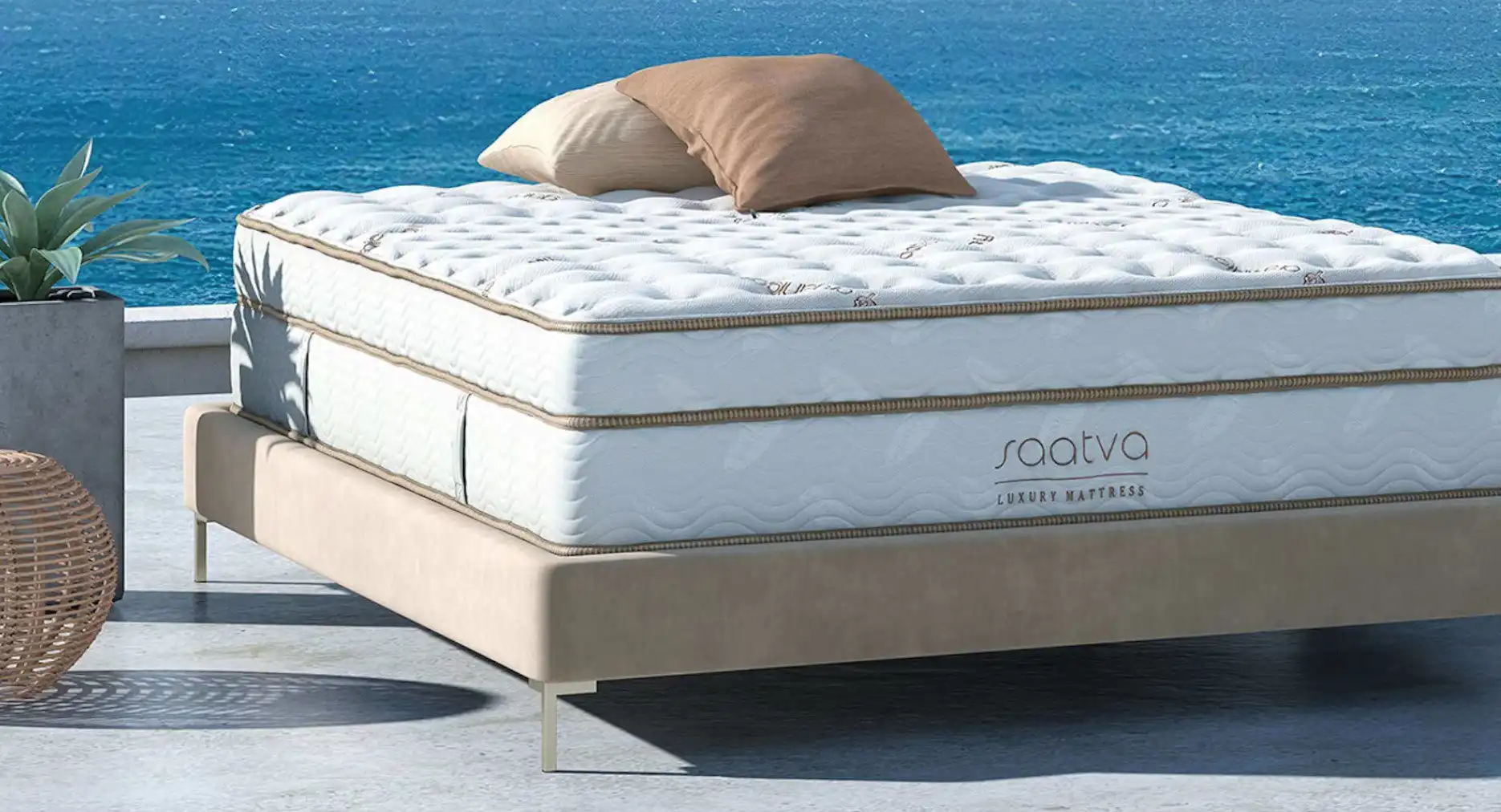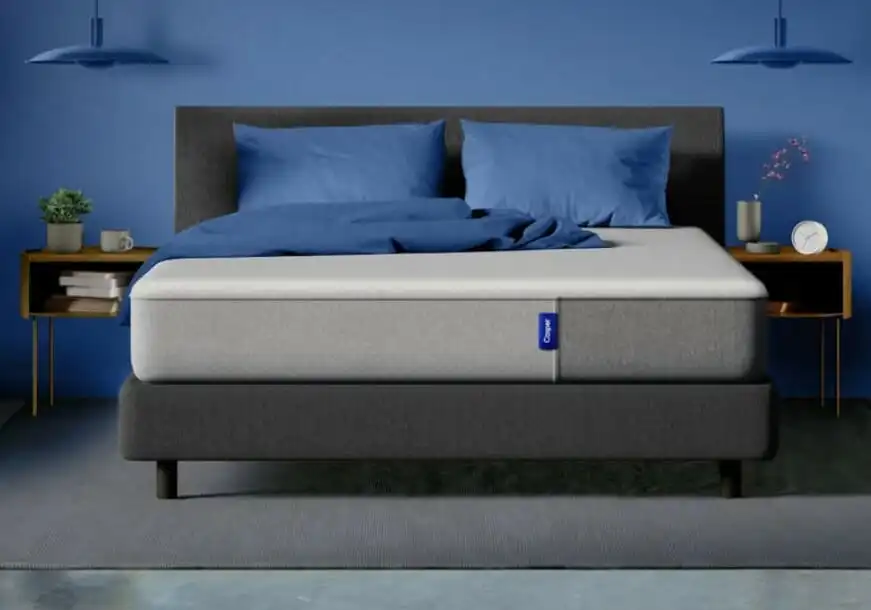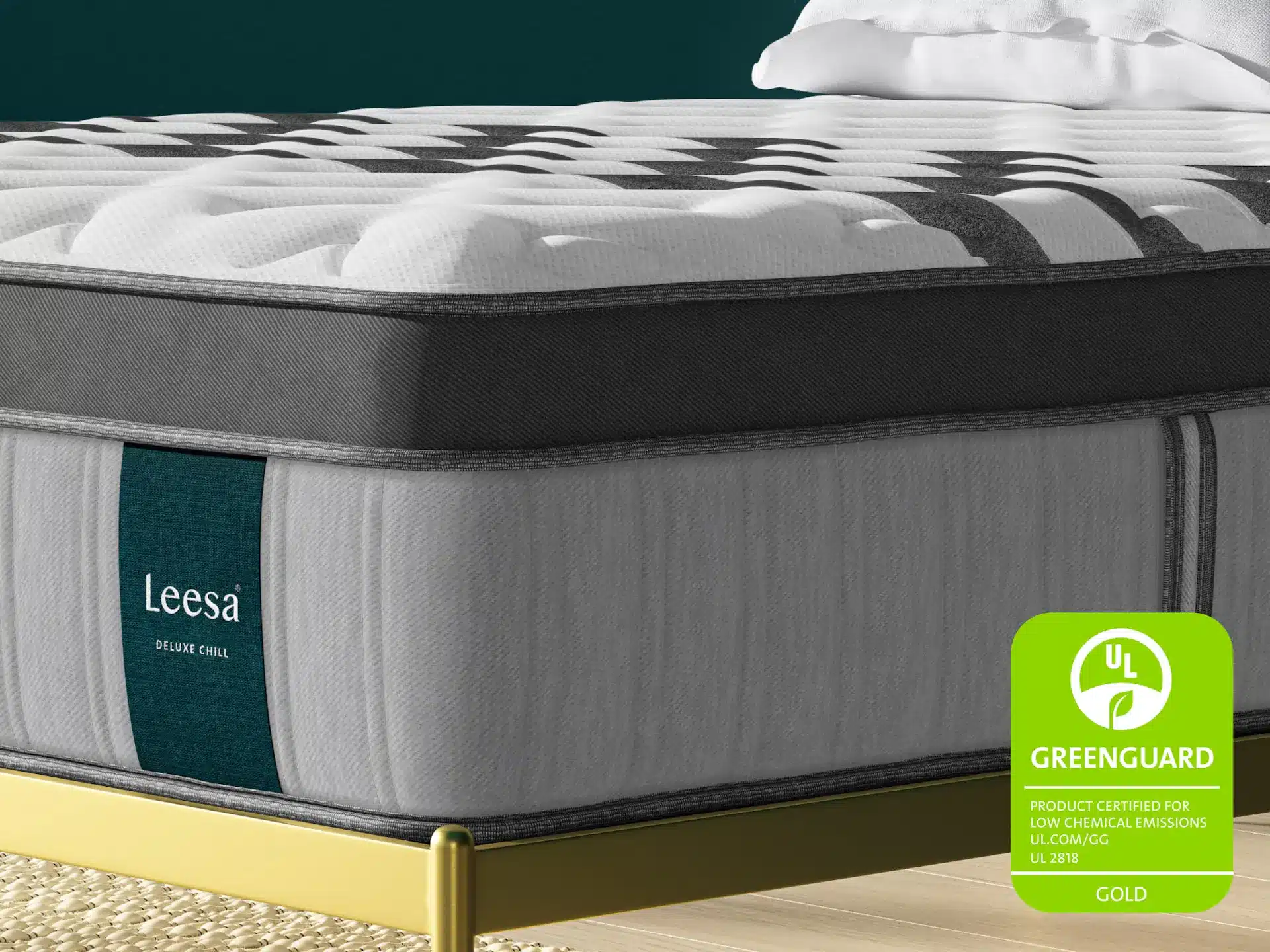Best Mattress for Back Sleepers 2024
- 05/13/2024
- No Comments
Ben Trapskin

Sleep experts consistently advocate for back sleeping, as it is believed to be the easiest on the spine and the least likely to lead to soreness or wrinkles. Despite consistent advocacy for back sleeping, this is by far the rarest sleep position, with the National Sleep Foundation reporting that just eight percent of adults sleep on their backs.
Pros and Cons of Back Sleeping
Sleeping on your back is one of the most common sleep positions, and it has both pros and cons. Here is a list of some of the advantages and disadvantages of sleeping on your back:
Pros:
- Spinal alignment: Sleeping on your back helps maintain a neutral position for the spine, reducing the risk of developing back and neck pain. This alignment also minimizes the likelihood of experiencing discomfort due to pressure points.
- Reduced acid reflux: By keeping the head elevated and the stomach below the esophagus, back sleepers can minimize the risk of experiencing acid reflux and heartburn.
- Minimized wrinkles and facial pressure: When you sleep on your back, your face is not pressed against a pillow, which can help reduce the development of wrinkles and minimize facial swelling or puffiness.
- Decreased risk of developing pressure sores: Since the body’s weight is distributed evenly in this position, there is less pressure on specific areas, reducing the risk of pressure sores for those who are bedridden or have limited mobility.
- Less strain on internal organs: Sleeping on your back can help reduce strain on internal organs, particularly the lungs and heart, which can be beneficial for overall health.
Cons:
- Snoring and sleep apnea: Sleeping on your back can lead to a higher risk of snoring and sleep apnea due to the relaxed position of the tongue and soft palate. This can obstruct the airway, leading to breathing difficulties during sleep.
- Lower back pain: For some individuals, particularly those with existing lower back issues, sleeping on the back can exacerbate pain. This can be mitigated by placing a pillow under the knees to maintain the natural curve of the spine.
- Pregnancy discomfort: Pregnant women may find sleeping on their backs uncomfortable, particularly during the later stages of pregnancy. This position can also decrease blood flow to the uterus and may not be recommended by healthcare professionals.
- Not suitable for everyone: Some people simply find it uncomfortable to sleep on their backs, making it difficult for them to fall asleep or stay asleep in this position.
- Potential for limb numbness: Sleeping on your back with your arms resting beside you may lead to reduced blood flow and nerve compression, resulting in numbness or tingling in the arms or hands.
Ultimately, the best sleep position for you depends on your personal comfort, any underlying health conditions, and individual preferences. If you have concerns about your sleep position, it’s a good idea to consult with a healthcare professional for personalized advice.
Downsides and Challenges of Back Sleeping
There are few personal downsides to back sleeping, but it can be aggravating for others if you share your room — and if you happen to snore. Unfortunately, back sleeping aggravates snoring, which can keep others awake. Some people believe that back sleeping is problematic for those with sleep apnea, but research actually indicates that the prone (stomach) position is more harmful for apnea sufferers.
Best Mattresses For Back Sleepers
The Helix Dawn is the best choice for back sleepers for several reasons, but it’s important to consider individual preferences and sleeping needs:
Firmness and Support: The Helix Dawn falls on the firmer side of the spectrum, rated around a 7-7.5 on a 10-point scale. This firmness is ideal for most back sleepers because it prevents excessive sinking and maintains proper spinal alignment, reducing the risk of back pain.
Pressure Relief: While firm, the Helix Dawn offers a balance of support and pressure relief with its hybrid construction. The latex-like polyfoam top layer conforms to your curves, especially around the lower back, alleviating pressure points and promoting comfort.
Lumbar Support: The coils in the lower layers of the mattress provide strong, zoned support, particularly in the lumbar region. This helps maintain the natural curve of your spine and prevent lower back aches.
Responsiveness and Breathability: The hybrid design offers a good balance of bounce and pressure relief. You can easily change positions without feeling stuck, and the coils promote air circulation, preventing heat build-up and keeping you cool throughout the night.
Durability: The combination of high-quality latex-like polyfoam and durable coils makes the Helix Dawn a long-lasting option. This is important for back sleepers who tend to put more pressure on their mattresses.
However, consider these factors for back sleepers:
- Body weight: Lighter back sleepers might find the Helix Dawn too firm, while heavier sleepers might not experience enough pressure relief.
- Sleeping habits: If you’re a restless sleeper who moves around a lot, the bouncier nature of the hybrid mattress might not be ideal.
- Personal preference: Some back sleepers prefer softer mattresses, and the Helix Dawn might not be their cup of tea.
America’s best-rated certified organic mattress features GOLS-certified organic latex, GOTS-certified organic wool, GOTS-certified organic cotton, and up to 1,438 pocketed support coils arranged in 5 zones.
The Avocado Original, also known as the Avocado Green Mattress without the pillow-top option, can be a great choice for back sleepers for several reasons:
Firmness and Support: Back sleepers need a mattress that provides adequate support for their spine’s natural alignment. The Avocado Original is rated as a 7 on a firmness scale (10 being the firmest), offering a medium-firm feel. This firmness prevents excessive sinking, which can lead to poor spinal alignment and back pain.
Pressure Relief: While firmness is important, a mattress shouldn’t feel stiff or uncomfortable. The Avocado Original uses organic Dunlop latex, known for its contouring properties, to cradle your curves and relieve pressure points, particularly in the lower back. This helps maintain proper spinal alignment and prevent pressure buildup while you sleep.
Lumbar Support: The zoned support system in the Avocado Original features a firmer center section designed to provide additional support for the lumbar region. This is crucial for back sleepers, as proper lumbar support helps maintain natural spinal curvature and prevent backaches.
Responsiveness and Breathability: Latex is naturally responsive and bouncy, allowing for easy movement in bed. This is ideal for back sleepers who tend to toss and turn less than side sleepers. Additionally, latex is an excellent breathable material, promoting air circulation and preventing heat build-up, which can disrupt sleep.
Durability and Eco-Friendliness: Back sleepers typically put more pressure on a mattress than side sleepers. The Avocado Original’s durable construction using high-quality organic materials like latex and coil springs ensures it can withstand this pressure and maintain its comfort for years to come. Furthermore, choosing an organic mattress like the Avocado Original makes an eco-friendly and healthy sleep choice.
The Plank by Brooklyn Bedding comes in an all-foam or hybrid version. The all-foam version is great for eliminating motion transfer and partner disturbance. The Plank is one of the firmest foam mattresses we tested and you get the option to upgrade to a cooling top layer to help you fall asleep even faster.
The Plank mattress can be a good choice for back sleepers for several reasons, but it’s important to consider individual preferences and needs:
Firmness and Support: The Plank offers two sides: firm and extra-firm. Back sleepers generally benefit from a firmer mattress to maintain proper spinal alignment, and the Plank caters to this preference. Both sides prevent excessive sinking, ensuring your spine stays neutral and comfortable.
Pressure Relief: While firm, the Plank still uses foam layers that provide some contouring and pressure relief, particularly under the lower back. This is crucial for back sleepers to avoid pressure build-up and potential pain.
Lumbar Support: Some Plank models come with a zoned comfort system featuring a firmer center section specifically designed for additional lumbar support. This aligns with your spine’s natural curve, keeping it neutral and preventing discomfort.
Responsiveness and Breathability: The Plank uses high-quality foam that offers some bounce and responsiveness, making it easier to move and adjust positions while sleeping. It’s also breathable, allowing for good air circulation and preventing heat build-up.
Durability: The Plank’s construction is designed to be long-lasting, which is particularly important for back sleepers who typically put more pressure on the mattress.
However, consider these drawbacks for back sleepers:
- Extra-firmness: While some back sleepers prefer extreme firmness, others might find the extra-firm side uncomfortable. Try both sides before making a decision.
- Side sleeping: The Plank is not ideal for side sleepers due to its lack of pressure relief at the shoulders and hips.
- Body weight: Lighter back sleepers might find the mattress too firm, while heavier sleepers might not get enough pressure relief.
All Mattresses For Back Sleepers
|
||
|
||
|
||
|
||
|
||
|
||
|
||
|
||
|
||
|
||
|
||
|
||
|
||
|
||
|
||
|
||
|
Have Questions?
Text us at 858-232-5760 for assistance. We’re happy to help!
















